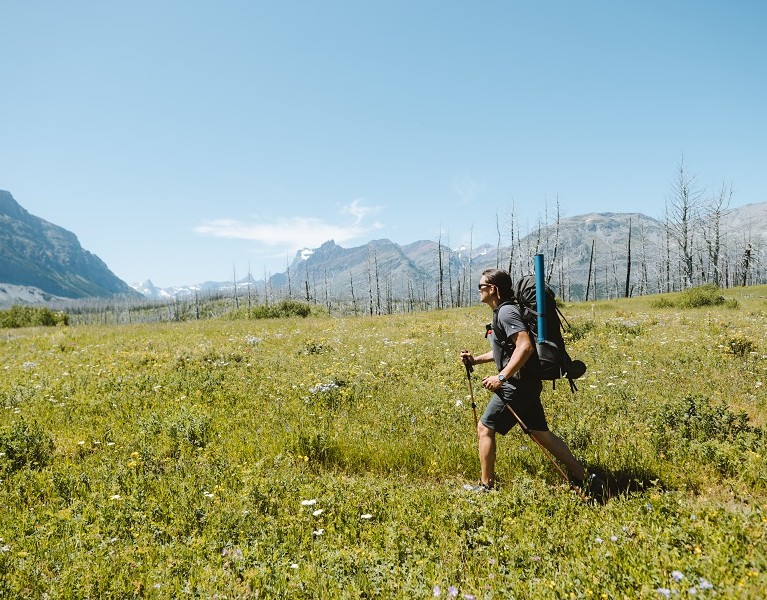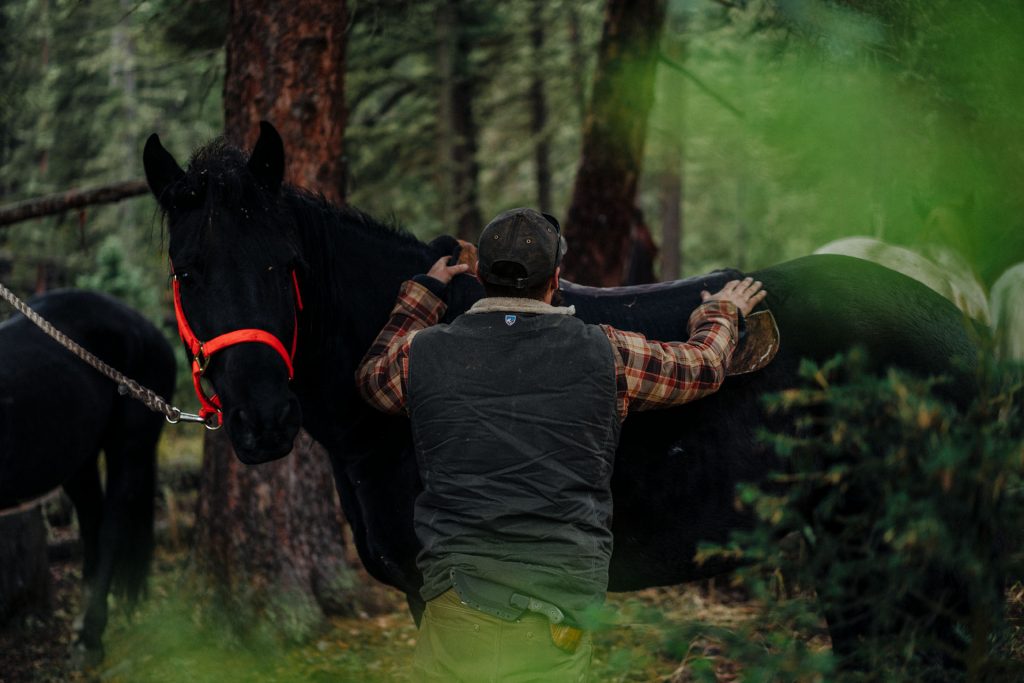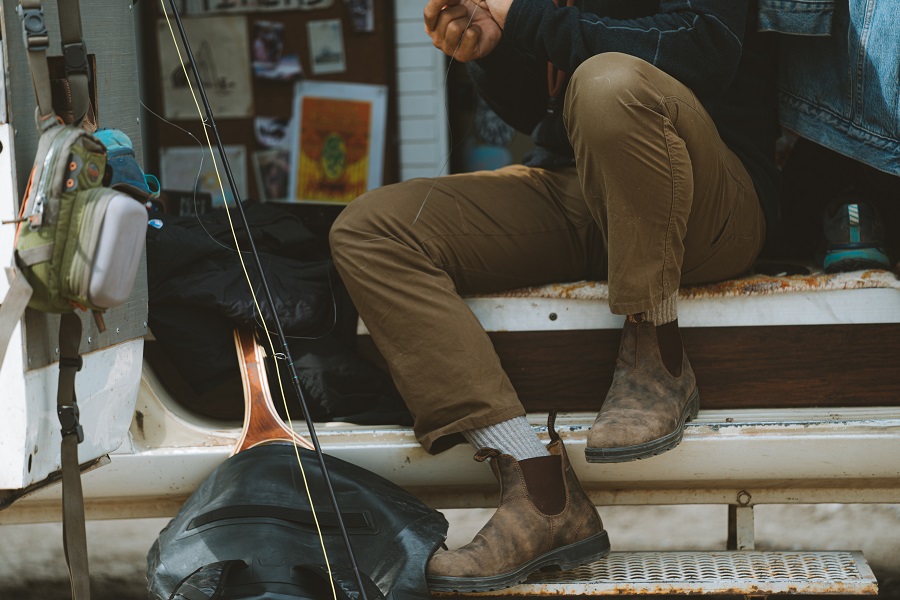
Choose Your Adventure: Get Involved as a Wildlife Conservation Volunteer
Table of Contents [Show]
Have you dreamed of being a wildlife biologist, but hate paperwork, data-crunching, and bureaucracy? Good news: you can experience the romanticized aspects of conservation work without years of graduate school and field training.
Well, at least some of them. And a wee bit of paperwork never hurt anybody.
Every year, government wildlife agencies conduct field counts to determine overall species health and set harvest limits. Methods include tracking through radio and GPS tags, capturing animals to mark and release, or visually counting as many animals in a defined area as possible within a set time frame.
For obvious reasons, there aren't many opportunities to tag along (no pun intended) with game biologists in late winter when they're pulling bears from their dens, but wildlife agencies love to recruit the public for lower-risk survey activities. Sometimes, they require volunteers to participate in workshops or brief orientations, but in others, they're just asked to show up or share data from their own day-to-day observations.
Spotlighting surveys
My first experience with surveying game was in western Oregon. I'd signed up at a regional office, and on one cold, windy night I hopped into a field biologist's pickup for a long night driving on bumpy, rutted fire and logging roads. He handed me a 1000-lumen spotlight, and we set out to count eye reflections. We saw tons of deer but also a bobcat, some opossum, owls, and plenty of scurrying rodents. I'd definitely do it again, especially if there was the chance to play with thermal imaging.
- Here's one deer hunter's perspective on the accuracy of spotlighting surveys.
- Private groups such as Nature Conservancy organize annual deer spotlighting surveys.
- Learn how Alaska Department of Fish a Game estimates game populations
Deer spotlighting sessions may last as few as a couple hours or the entire night. There's a chance you'll ride in an open vehicle, but you'll at least have your windows down in order to use night vision or spotlighting equipment. Be sure to bring along a warm waterproof and wind-resistant jacket, gloves, and a wool or fleece hat. Score points with your badge buddy by bringing along a big Thermos of hot coffee.

Organized hiking or horseback game surveys
Some terrain isn't conducive to vehicle travel, especially at night. That's certainly the case with the rocky, high-desert San Gabriel Mountains in Southern California. There, the USFS, California Department of Fish and Wildlife, and the nonprofit Society for the Conservation of Bighorn Sheep organize annual survey hikes each Spring to count Bighorn sheep.
Other agencies encourage volunteers to trailer in and saddle up their horses to cover more ground. The Wyoming Range and Uinta Mule Deer Herd Surveys rely on mounted volunteers for their annual spring mortality counts. Hikers are welcome, too, and those who want to ride but don't have access to their own horses can be matched up with extra mounts.
If you expect to ride, wear boots with a heel. These reduce the likelihood you'll get your foot caught in the stirrups. Keep your heels pointed down. Choose durable women's work pants or a pair of men's hiking pants with a gusseted crotch and articulated knees for the best comfort. Don't forget to put sunscreen on your hands or wear gloves; I've found that when holding the reins, my hands are more vulnerable to direct sunlight.
Aerial game counts and telemetry
If you live in a mountainous rural area like I do, you wonder how the tin-foil-hat crew handles the sudden appearance of a low-flying game survey helicopter. When I first moved here, aerial game surveys sure took me by surprise.
Fish and game agencies hire helicopter or fixed-wing craft pilots to get the birds-eye view of herds and packs and to locate radio-tagged animals with special telemetry receiver antennae (called "yagis") attached to a plane's wing. Vetted private pilots often volunteer their time in exchange for fuel. If you're an experienced pilot, it never hurts to network with your state wildlife and university biology departments in case a field study needs air support. In the meantime, you'll rack up those hours necessary to maintain your pilot's license.
While you're at it, connect with your state's falconry club. Licensed falconers often lose valuable birds used for hunting or chasing pest birds away from crops and landfills. Their raptors are almost always fitted with transmitters and in most cases, are easily tracked down on foot or by car, but from time to time a falcon will travel far beyond its transmitter's range, requiring the help of pilots.
Camera trapping and crowd sourced data
Hunters and biologists use motion-activated game cameras to study the habits and health of local game populations, and anyone can use them just to see what's out there. Now, you can do more with your camera traps than troll Bigfoot forums with photos of blurry squirrel butts.
The Zooniverse is the world's largest platform for crowd sourcing scientific data, and universities and government resource management agencies are asking everyday, average citizens to participate, even if they flunked high school biology. Through its Snapshot Wisconsin program and the Zooniverse platform, the Wisconsin Department of Natural Resources (WDNR) works with volunteer trail camera monitors to gather data on native wildlife.
"Because we know where and when these photos were taken, we can create maps for both common and rare species across the state and visualize how animal populations change through time." — From Snapshot Wisconsin
WDNR isn't the only agency using public-sourced data. Contact your local universities and natural resource offices to learn if they have similar programs in place, or if they're planning pilot projects.

Level up your volunteering commitment
With the exception of offering aerial support, the above wildlife agency volunteering opportunities don't require extensive training or more than a few hours or days out of the year. The following projects, on the other hand, demand training and at least a season-long commitment, but they're worth every minute.
Education and outreach
Become a docent for trail days, local visitor centers or for presentations at schools or scouting troops. New Hampshire Fish and Game's World of Wildlife Program is an example of the type of job we all dream of—visiting classrooms full of excited kids while holding cuddly, bitey, sharp-clawed critters! Pro tip: You never really "have" the crowd until a small woodland creature or red-tailed hawk craps all over you or their teacher.
Bird banding
Leg banding is an important process in studying migratory birds, and private, public, and non-profit organizations are always on the lookout for hard-working amateur ornithologists to train and work under the supervision of Migratory Bird Treaty Act (MBTA)-licensed banders. Peep the Bird Conservancy of the Rockies' introductory video and overview of their volunteer program.
Public liaisons
Game wardens don't always have the personnel to respond when citizens report wildlife damage on private property. Several state wildlife agencies, including Colorado Parks and Wildlife, sponsor a Bear Aware Volunteer Program in which trained citizens make incident reports and help residents and businesses learn to bear-proof their properties. These efforts save the lives of pets, livestock, and bears while improving relationships between game authorities and private citizens.
KÜHL people get involved!
Dang! I can't go with you to your cousin's video game tournament after all. I gotta go trap snapping turtles.
You never need an excuse to spend time outdoors, but when you're committed to a conservation-minded project, you always have one on hand. Go count goshawk nests, lead a hunter safety class or work at a nearby fish hatchery. Volunteer at a boat inspection station to check for invasive mussels or aquatic plants. Or just speak up when your state wildlife department is calling for public input while creating new management policies.
Bookmark and check with Volunteer Opportunities to see if there are any opportunities that interest you, and don't be afraid to reach out to your local public or non-profit agencies to offer general support. Often, the only thing they need before launching a program is the confidence they'll have boots on the ground.
Do you have any stories about volunteering with wildlife conservation projects? Share them with KUHL! If you're trying to rally the troops for your own agency, we'd love hear about it.


